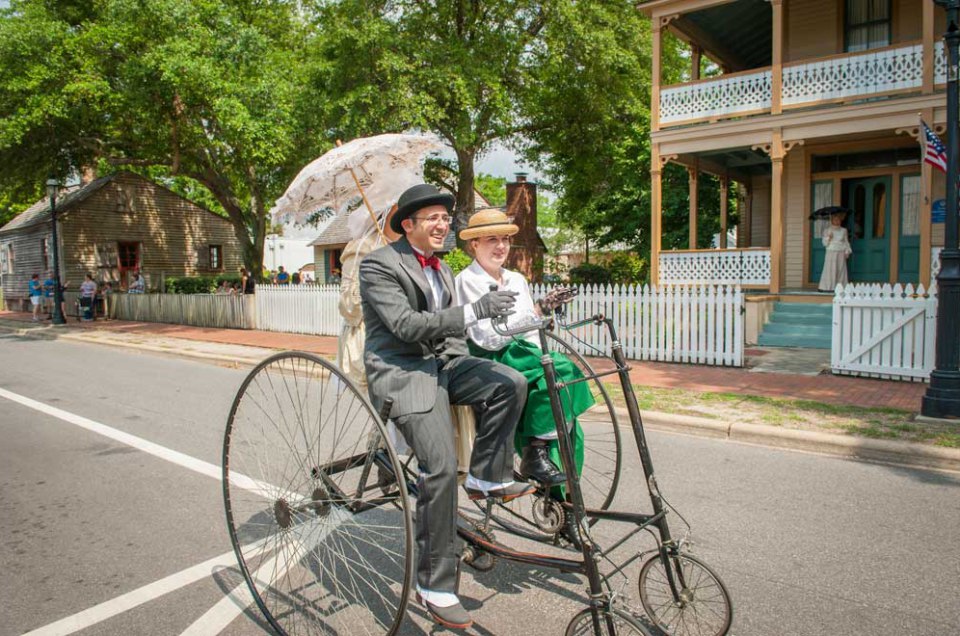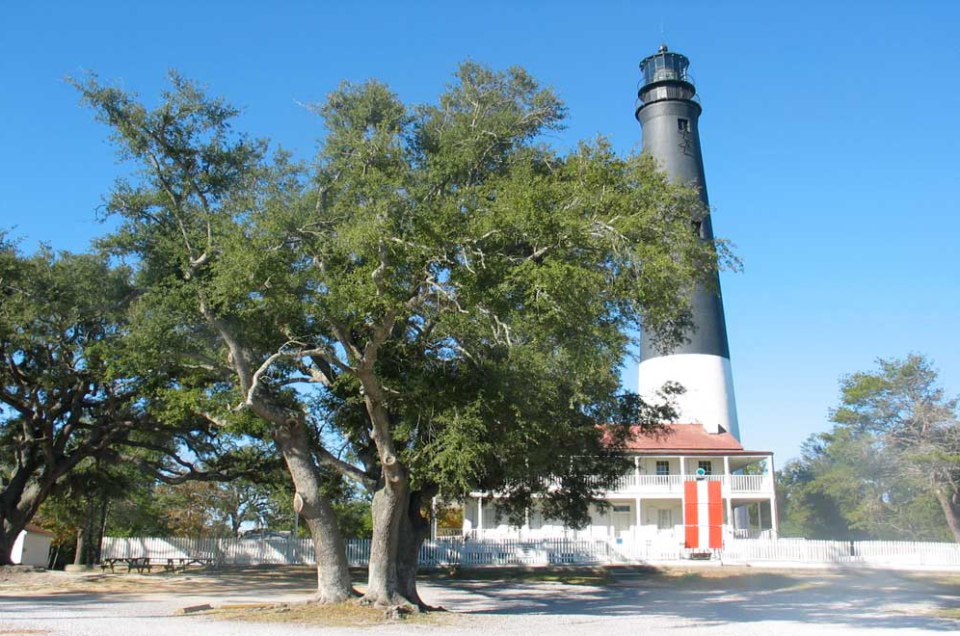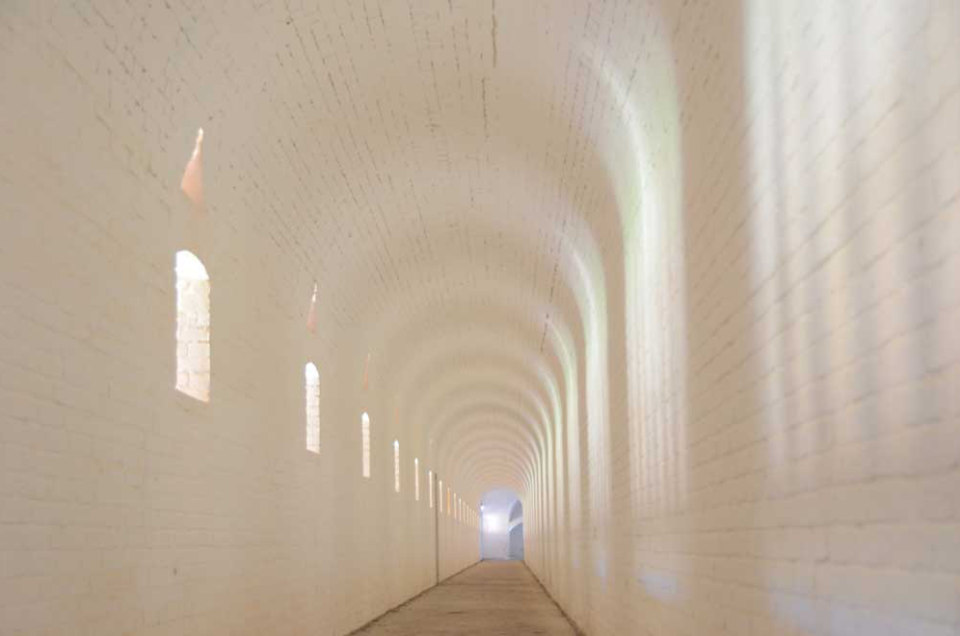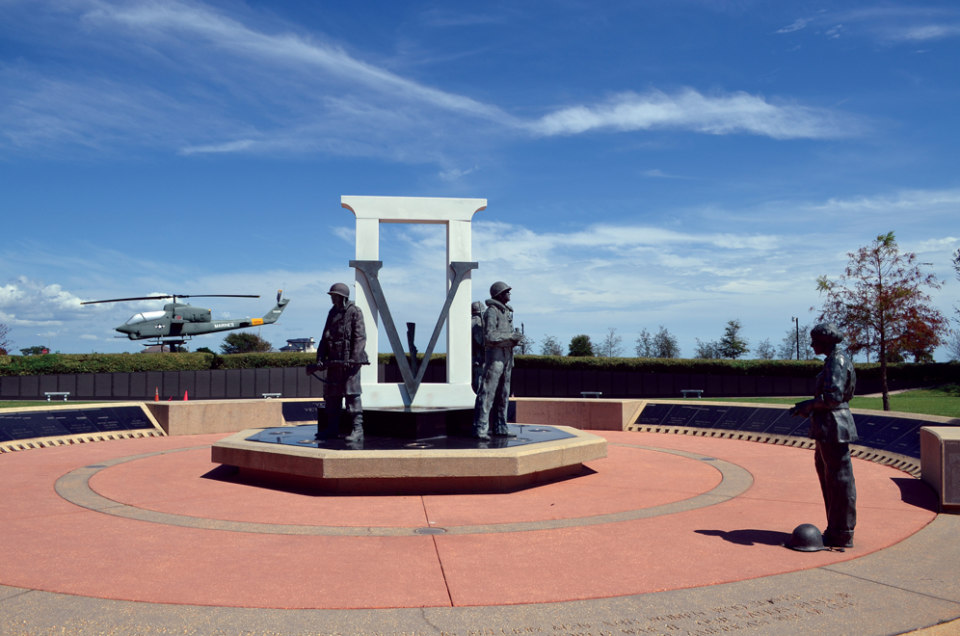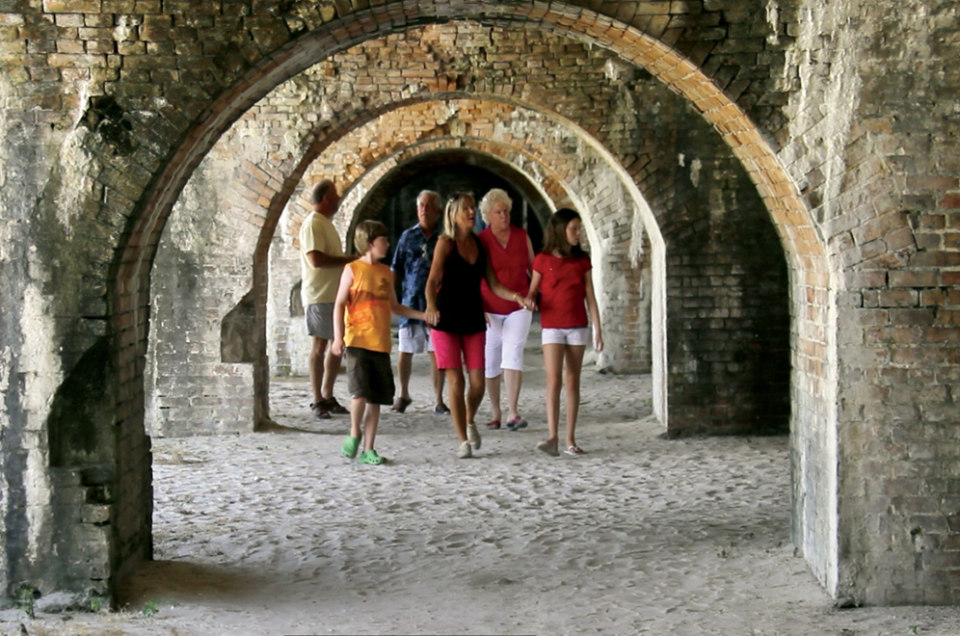A city 450 years in the making, Pensacola has a lot to offer history buffs.
Spanish explorer Don Tristan de Luna first landed on the shore in 1559, making Pensacola the first European settlement in America. He was forced to leave after a hurricane destroyed his supplies, sank five ships, and killed most of the crew, leaving the area unsettled for the next 135 years.
Since its resettlement, Pensacola has changed governments five times — Spain, the United Kingdom, the United States of America, and the Confederate States of America — earning it the nickname “The City of Five Flags.” With each culture leaving their mark on Pensacola, those relics can be enjoyed by anyone with an appreciation for days gone by.
Fort Barrancas
A designated national landmark, Fort Barrancas offers an interesting glimpse into Pensacola’s military history — along with a stunning view of the bay. Built out of logs by the Spanish in 1797, what is standing now is a contribution of Spanish, British, and American engineering efforts over the past two centuries. It is physically located within the Naval Air Station, which was built around it years later. Ceasing military operations after WWII, it was transferred to the National Park Service before being open to the public. Tours are available daily, but it is also just a nice place to take a quiet stroll and soak in the ocean breeze.
Historic Pensacola Village
The Historic Pensacola Village is a must-see for anyone interested in the stories of the past or colonial architecture. A massive complex of 27 buildings and museums, most was made possible by T.T. Wentworth Jr., a philanthropist whose house is the crown jewel of the Village. First opened as a roadside attraction, the home is now three floors of permanent and traveling exhibits chock full of eclectic American and Floridian historical relics. Furnished period houses, one of the oldest churches in Florida and the Museum of Commerce are other spots that celebrate yesteryear. Guided tours of the compound are available three times daily, and it’s important to note that patrons won’t be allowed in many buildings without a guide. Typically lasting 1-1.5 hours, your admission is good for the whole week if you’d like to explore further on your own.
Veteran’s Memorial Park
Along peaceful Bayfront Parkway, you’ll find an incredible assortment of monuments honoring those that have served and the heroes among us. With memorials for everything from both World Wars to touching recent addition about the War on Terror, it’s a place to reflect and ask yourself some touch questions. You could spend all day exploring the sculptures dedicated to those who earned purple hearts, but whatever you do, don’t miss the South Wall. A moving tribute to the Vietnam Veterans, it’s the nation’s only permanent replica outside of Washington D.C.
Pensacola Lighthouse
For another great view with a touch of history, the Pensacola Lighthouse is indispensable. Shining from this spot since 1824, it actually predates the modern rendition of Fort Barrancas. The lighthouse you see today was lit in 1859, and, other than electricity and a few modern improvements, is largely intact. There are also tales of the original lighthouse keeper who supposedly haunts his old home, with ghost tours offered every so often to pay a visit. To get to the top, it’s 177 steps, from which you can see Pensacola Pass (where the Bay meets the Gulf of Mexico), three forts, the entire skyline and the historic Navy Yard. Make a day of it and visit the National Naval Aviation Museum while you’re here.
Fort Pickens
The largest of Pensacola’s four forts, Fort Pickens was completed in 1834 and was one of only four forts in the South never occupied by Confederate troops during the Civil War. Part of the Gulf Islands National Seashore, the Fort resides on the coast of Santa Rosa Island in order to oversee the naval base. Reopened for visitors in 1976, you can tour the fortification or camp nearby to picture yourself living through the days of wooden warships and cannons.
Sponsored by Visit Pensacola
